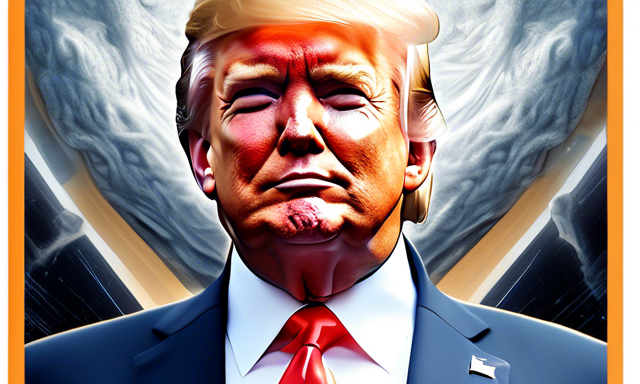2024 Election Insights: The Power of Prediction Markets 🤔
This year, the dynamics of political prediction markets demonstrated their ability to forecast electoral outcomes effectively. As the election unfolded, platforms like Polymarket emerged as reliable indicators, providing insights that traditional polling methods could not.
Accurate Forecasting Through Prediction Markets 🧐
In the lead-up to the 2024 presidential election, Donald Trump was consistently identified as a frontrunner by prediction markets, even when traditional polls suggested otherwise. Over the summer and fall seasons, the Democratic nominee, Kamala Harris, was often slightly leading in various polls. However, data from Polymarket painted a contrasting picture, with Trump retaining a favorable standing.
A Shift in Odds 😲
The day before the election, estimates on Polymarket indicated Trump had a 60% chance of winning. Astonishingly, this figure jumped to 98.8% come election night. This remarkable shift underscores the market’s responsiveness to real-time data and events.
Interestingly, this rise came amidst skepticism from various media outlets, which had previously questioned the integrity of Polymarket, insinuating that his supporters were artificially boosting his perceived chances.
Media Aligns with Market Predictions 📈
By early Wednesday morning, even venerable sources like The New York Times echoed the market predictions, estimating Trump’s probability of winning at over 95%. Projections indicated that Trump would secure 306 electoral votes, a clear victory above the necessary 270 electoral votes to clinch the presidency.
The Role of Blockchain in Prediction Markets ⚙️
Polymarket’s operation leverages blockchain technology, facilitating substantial trading volumes throughout 2024. This platform enables individuals to engage in predictions regarding political and other real-world events, with prices reflecting collective market assessments of potential outcomes.
Expert Opinions on Market Accuracy 👨🏫
Koleman Strumpf, an economics professor affiliated with Wake Forest University, praised the predictive capabilities of these markets. He stated that the markets provided a more accurate forecast compared to traditional polling methods that described the race as too close to call.
“The markets were far and away the best forecast of the 2024 election,” stated Strumpf, emphasizing the effectiveness of market-based predictions.
This success has spotlighted the potential merits of employing prediction markets over standard polling techniques. When real stakes are involved, individuals make informed bets based on analysis rather than personal biases or preferences.
Predictive Market Mechanics 🕹️
Hart Lambur, co-founder of UMA Protocol, underlined the straightforward nature of the market’s success. He remarked that Polymarket accurately called Trump as the likely victor, even when traditional surveys indicated uncertainty.
Balanced Views on Election Forecasting 🧭
While the accuracy of this cycle raises questions regarding the reliability of polling, experts like Aaron Brogan argue that it is essential to evaluate more data before drawing definitive conclusions about prediction markets’ efficacy.
“This outcome aligns with both the success of prediction markets and a minimal polling error that skews traditional poll averages,” Brogan noted.
Dynamic Trading Environments 📊
As election day unfolded, traders on prediction markets exhibited keen responsiveness to emerging results and exit polls. The nature of these markets—where outcomes are binary—forms a dynamic environment that adjusts rapidly with new information.
Dragonfly’s managing partner, Haseeb Qureshi, pointed out that both traditional polls and prediction markets serve crucial roles in electoral forecasting.
“The lesson is that markets are great and forecasts are an input to those markets,” he conveyed, adding that both serve valuable functions.
Concerns and Conclusions on Prediction Markets 🔍
As of the early hours following the election, allegations suggesting prediction markets would undermine democratic processes remained unfounded. Professor Strumpf observed that none of the anticipated negative consequences had materialized.
Despite the Associated Press not officially declaring the race, Polymarket prices were indicative of the growing consensus regarding Trump’s victory. This success reinforces the argument for incorporating forecasting mechanisms alongside traditional polling methodologies.
Hot Take: The Future of Political Forecasting 🌟
This year’s election has highlighted the significant potential of prediction markets in elucidating electoral outcomes. While they might not entirely replace conventional polling techniques, their demonstrated performance indicates they warrant serious consideration as valuable supplementary tools for forecasting elections.





 By
By
 By
By
 By
By


 By
By